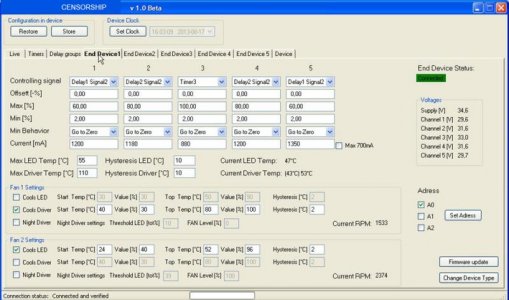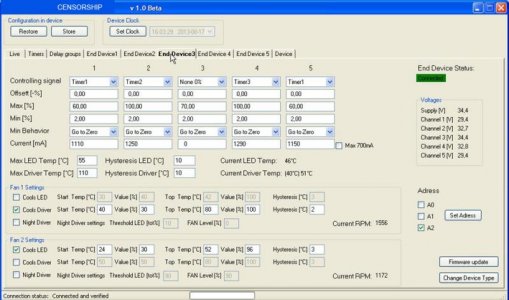Lassef
Member
What you say about the XM-L is true, if running them at a high amperage they are less efficient than running some lower powered LEDs at a much lower current.
You have the choice of low running cost or low set up costs.
For the best bang for your $ I actually prefer the Cree XT-E.
It is not easy to compare the lumen per watt levels of an Epistar LED to that of a Cree as Epistar (so far as I can tell) don't supply data for white LEDs, only the royal blues which are converted to white with a phosphor.
The lumen per watt levels supplied by the finished multi-chip product will depend on the phosphor used (among other factors).
If trying to compare the efficiency of these multi-chip LEDs to a Cree its far easier to ignore the phosphor and stick to comparing the output of royal blue LEDs.
According to the AC-RC supplied data sheet on the Epistar LEDs used in their dream chip, the royals used to make them can produce between 360 and 400mw @ 350ma ( I can't find details of such an efficient chip on the Epistar website, 295mw seems to be the most efficient mentioned there).
The Q flux bin Cree XT-E produces a minimum of 600mw at 350ma, its minimum rating is 50% higher than the max quoted by AC-RC.
At 700ma the Epistar be running at its maximum current (never a good thing) and will produce a max of 720 mw.
At 700ma the Cree XT-E will be run at less than half its rated power and will produce a minimum of 1050 mw
If you take into account that the Epistar figures are for an LED run at a temperature of 25c and the Cree at 85c then things swing even further in favour of the Cree.
There is a graph provided by Epistar showing the drop in output at higher temperatures but it only goes up to 80c, at which point the chip has lost around 10%, so now at around 650mm @700ma.
It looks to me that at the same drive current a high rated XT-E based system is over 50% more efficient than the Dream chip.
At 1A the XT-E will produce 1380mw, on average consuming 3.15 watts, or 438mw per watt.
At 700ma the Epistar will consume 2.45 watts, providing 265mw per watt.
Even at the maximum rated current of 1.5A the XT-E will produce a minimum of 354 mw per watt.
If you want to compare the output of white chips - you can't only compare the underlying blue chip. The final result is also depending of the phosphorus layer. In your case - the real output of a low Kelvin white LED based on Cree XT-E probably has an equal or lower PAR reading compared with a high Kelvin LED based on Epistar.
If you only compare the Royal Blues "“ you are right - but I think you are comparing apples and pears. The Cree XT is a large chip, it has probably more than 100 % larger surface compared with the Epistar. The flux are depended of the size. See the attached picture.

And remember in the world of OEM "“ you never know who is producing the stuff a company sell. Epileds are one of the few producers of LED with wavelengths around 420 nm "“ they are not many worldwide.
Epistar and Epileds are quality brands from Korea but all LED sold with their names are not the real stuff. In the same way that not all Rolex is the real stuff "“ especially not the cheap ones
Sincerely Lasse




